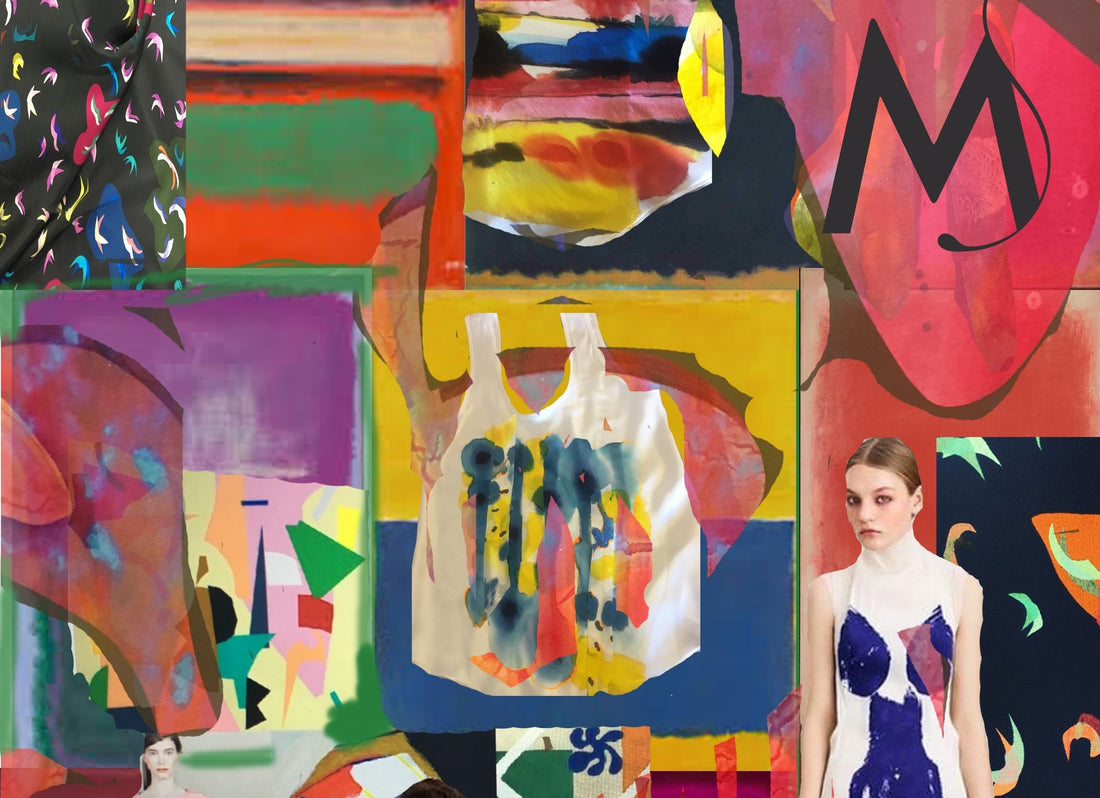
How to begin Silk Painting
If you decide to try your hand at silk painting, you’ll be attempting a technique that goes back many centuries: in China and other parts of the Far East, the traditional art of painting on silk predates painting on paper, a ‘new’ and cheaper invention that began to come into popular use a trifling 2,000 years ago.
When silk paint or dye is applied to the fabric it will, if left to its own devices, produce a watercolour-like effect. If you want a crisper, harder-edged effect, you’ll need to control where the colour goes.
You can do this with a resist medium known as gutta, or a water-based resist. Applied to the fabric to outline the design and left to dry, the resist acts as a barrier that keeps the colour contained within the outlines. Some resists can be removed once the paint or dye is set, leaving outlines in the base colour of the silk. Coloured guttas and resists are also available that are meant to be left on the fabric and become part of the design.
Another way of keeping the colour under control is to apply a specialised primer to the fabric – rather like the size an oil painter might apply to a canvas – and leave it to dry before you start to paint. The primer will keep the colour where you put it. Of course, you might want a more freehand effect, in which case be bold and paint directly onto the silk to produce a softer and more diffused finished piece.
Stretch it out
Whichever painting method you go for, you need to use prewashed silk. You should also stretch it before you begin. If you don’t do this, the dye or paint could collect in little pools in the crinkles of the silk and spoil the final result. You can tack the silk to a stretcher frame (the kind used to stretch canvas) or to a embroidery ring. Or you can be really clever and save money by stretching the fabric over the open top of a strong cardboard box. Stretch it firmly but not so tightly that you damage it.
Follow the lines
If you don’t feel confident enough to paint freehand onto the silk, start with a preparatory drawing on paper. To transfer your drawing, tape it to a window, then tape the silk over it and gently trace the lines. (If you are lucky enough to have a lightbox, you can use that instead.) You could also try using a special silk-painting marker to sketch your design directly onto the fabric. This fades naturally or disappears on contact with water or wet paint or dye.
Get Creative
Who said watercolour painters have all the fun? You can adapt some of the watercolourist’s tricks to achieve various creative effects in your silk painting. Spraying the silk with water or a mix of water and rubbing alcohol (two parts alcohol to one part distilled water) will cause the colour to spread and soften and create an abstract effect. For a similar, but more localised effect, squeeze on small drops of water using an eye dropper. Sprinkling the piece with silk salt while still wet will produce interesting mottled textures.
Be inspired
As with any other painting method you need to practise to become comfortable with the technique and to find your ‘style’, so it helps to try out some ideas on a scrap of silk first. If you want inspiration, check out traditional Chinese silk painting, Japanese scroll art and oriental batik.
